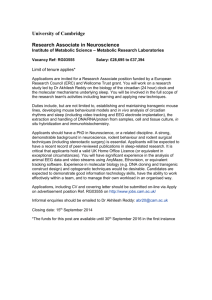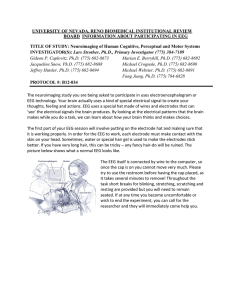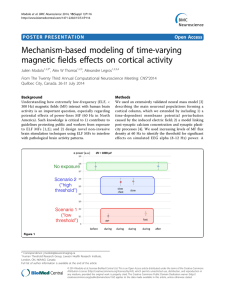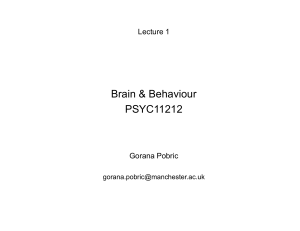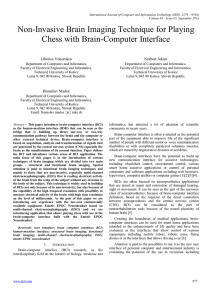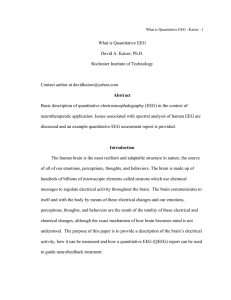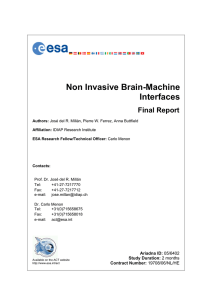an experimental setup for a brain-computer interface
advertisement
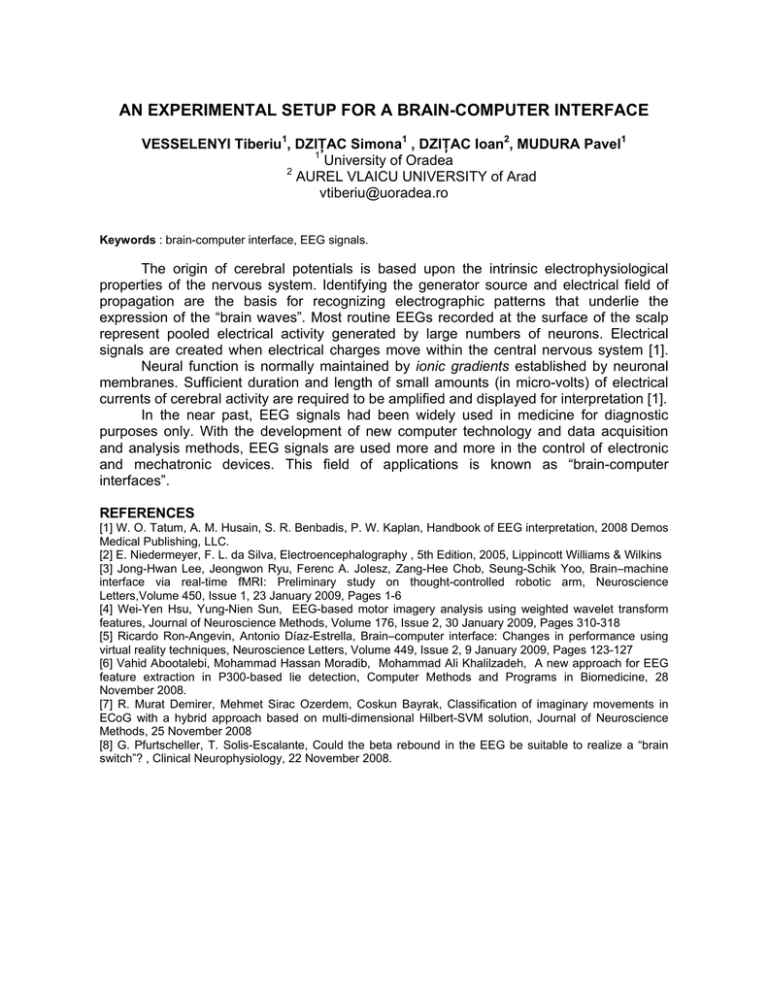
AN EXPERIMENTAL SETUP FOR A BRAIN-COMPUTER INTERFACE VESSELENYI Tiberiu1, DZIŢAC Simona1 , DZIŢAC Ioan2, MUDURA Pavel1 1 University of Oradea 2 AUREL VLAICU UNIVERSITY of Arad vtiberiu@uoradea.ro Keywords : brain-computer interface, EEG signals. The origin of cerebral potentials is based upon the intrinsic electrophysiological properties of the nervous system. Identifying the generator source and electrical field of propagation are the basis for recognizing electrographic patterns that underlie the expression of the “brain waves”. Most routine EEGs recorded at the surface of the scalp represent pooled electrical activity generated by large numbers of neurons. Electrical signals are created when electrical charges move within the central nervous system [1]. Neural function is normally maintained by ionic gradients established by neuronal membranes. Sufficient duration and length of small amounts (in micro-volts) of electrical currents of cerebral activity are required to be amplified and displayed for interpretation [1]. In the near past, EEG signals had been widely used in medicine for diagnostic purposes only. With the development of new computer technology and data acquisition and analysis methods, EEG signals are used more and more in the control of electronic and mechatronic devices. This field of applications is known as “brain-computer interfaces”. REFERENCES [1] W. O. Tatum, A. M. Husain, S. R. Benbadis, P. W. Kaplan, Handbook of EEG interpretation, 2008 Demos Medical Publishing, LLC. [2] E. Niedermeyer, F. L. da Silva, Electroencephalography , 5th Edition, 2005, Lippincott Williams & Wilkins [3] Jong-Hwan Lee, Jeongwon Ryu, Ferenc A. Jolesz, Zang-Hee Chob, Seung-Schik Yoo, Brain–machine interface via real-time fMRI: Preliminary study on thought-controlled robotic arm, Neuroscience Letters,Volume 450, Issue 1, 23 January 2009, Pages 1-6 [4] Wei-Yen Hsu, Yung-Nien Sun, EEG-based motor imagery analysis using weighted wavelet transform features, Journal of Neuroscience Methods, Volume 176, Issue 2, 30 January 2009, Pages 310-318 [5] Ricardo Ron-Angevin, Antonio Díaz-Estrella, Brain–computer interface: Changes in performance using virtual reality techniques, Neuroscience Letters, Volume 449, Issue 2, 9 January 2009, Pages 123-127 [6] Vahid Abootalebi, Mohammad Hassan Moradib, Mohammad Ali Khalilzadeh, A new approach for EEG feature extraction in P300-based lie detection, Computer Methods and Programs in Biomedicine, 28 November 2008. [7] R. Murat Demirer, Mehmet Sirac Ozerdem, Coskun Bayrak, Classification of imaginary movements in ECoG with a hybrid approach based on multi-dimensional Hilbert-SVM solution, Journal of Neuroscience Methods, 25 November 2008 [8] G. Pfurtscheller, T. Solis-Escalante, Could the beta rebound in the EEG be suitable to realize a “brain switch”? , Clinical Neurophysiology, 22 November 2008.

